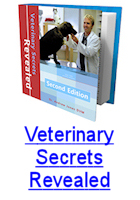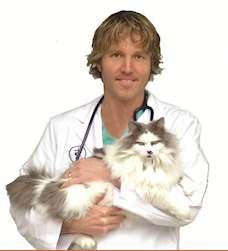Honey
Honey contains MANY components, and it is very rich in nutrients. Honey is composed of sugars like glucose and fructose and minerals like magnesium, potassium, calcium, sodium chlorine, sulphur, iron and phosphate. It contains vitamins B1, B2, C, B6, B5 and B3 all of which change according to the qualities, along with copper, iodine, and zinc exist in it in small quantities.
Due to its natural anti-inflammatory effect, it will help to heal the wounds more quickly. It also has different phytochemicals--chemicals found in plants and different foods--that kill viruses, bacteria, and fungus making it a good substitute for wound dressings.
Honey is a natural antiseptic. Raw honey, for example, contains small amounts of the same resins found in propolis. Propolis, sometimes called "bee glue," is actually a complex mixture of resins and other substances that honeybees use to seal the hive and make it safe from bacteria and other micro-organisms.
In Veterinary Medicine has has a multitude of uses, BUT for your own pets, the top 3 diseases are for WOUNDS and WOUND healing, COUGHS, and ALLERGIES.
Honey to heal wounds
Any wound can have honey applied to it- typically this would be for speeding up closure of an open wound.
Honey for Cough
Researchers from the Penn State College of Medicine asked parents to give either honey, honey-flavored dextromethorphan (DM), or no treatment to the children. The first night, the children did not receive any treatment. The following night they received a single dose of buckwheat honey, honey-flavored DM, or no treatment 30 minutes before bedtime. The trial was partially blind as parents could not distinguish between the honey and the medication, although those administering no medication were obviously aware of the fact. Parents were asked to report on cough frequency and severity, how bothersome the cough was, and how well both adult and child slept, both 24 hours before and during the night of the dosage.
Significant symptom improvements were seen in the honey-supplemented children, compared with the no treatment group and DM-treated group, with honey consistently scoring the best and no-treatment scoring the worst.
Honey for Allergies in dogs and cats
Local honey contains very tiny amounts of pollen. These tiny amounts of pollen are not enough to trigger the allergic reaction in your pet when they ingest the local honey. Each time your pet eats the local honey, he or she begins to build up a tolerance to the pollen. Eventually, your allergic pet is able to tolerate the amount of pollen usually present in the environment.
You can give your dog or cat 1 teaspoon per 10lbs daily. Do this for 60 days to test the effectiveness. Make sure it is raw local honey.
P.S. Honey is only 1 of OVER 1000 safe, natural and effective remedies that I go over in detail in my Complete Home Study Course.
Dr Andrew Jones DVM
www.vetsecrets.info
www.happytalespets.com
www.FlintRiverRanchStore.com
Honey contains MANY components, and it is very rich in nutrients. Honey is composed of sugars like glucose and fructose and minerals like magnesium, potassium, calcium, sodium chlorine, sulphur, iron and phosphate. It contains vitamins B1, B2, C, B6, B5 and B3 all of which change according to the qualities, along with copper, iodine, and zinc exist in it in small quantities.
Due to its natural anti-inflammatory effect, it will help to heal the wounds more quickly. It also has different phytochemicals--chemicals found in plants and different foods--that kill viruses, bacteria, and fungus making it a good substitute for wound dressings.
Honey is a natural antiseptic. Raw honey, for example, contains small amounts of the same resins found in propolis. Propolis, sometimes called "bee glue," is actually a complex mixture of resins and other substances that honeybees use to seal the hive and make it safe from bacteria and other micro-organisms.
In Veterinary Medicine has has a multitude of uses, BUT for your own pets, the top 3 diseases are for WOUNDS and WOUND healing, COUGHS, and ALLERGIES.
Honey to heal wounds
Any wound can have honey applied to it- typically this would be for speeding up closure of an open wound.
Honey for Cough
Researchers from the Penn State College of Medicine asked parents to give either honey, honey-flavored dextromethorphan (DM), or no treatment to the children. The first night, the children did not receive any treatment. The following night they received a single dose of buckwheat honey, honey-flavored DM, or no treatment 30 minutes before bedtime. The trial was partially blind as parents could not distinguish between the honey and the medication, although those administering no medication were obviously aware of the fact. Parents were asked to report on cough frequency and severity, how bothersome the cough was, and how well both adult and child slept, both 24 hours before and during the night of the dosage.
Significant symptom improvements were seen in the honey-supplemented children, compared with the no treatment group and DM-treated group, with honey consistently scoring the best and no-treatment scoring the worst.
Honey for Allergies in dogs and cats
Local honey contains very tiny amounts of pollen. These tiny amounts of pollen are not enough to trigger the allergic reaction in your pet when they ingest the local honey. Each time your pet eats the local honey, he or she begins to build up a tolerance to the pollen. Eventually, your allergic pet is able to tolerate the amount of pollen usually present in the environment.
You can give your dog or cat 1 teaspoon per 10lbs daily. Do this for 60 days to test the effectiveness. Make sure it is raw local honey.
P.S. Honey is only 1 of OVER 1000 safe, natural and effective remedies that I go over in detail in my Complete Home Study Course.
Dr Andrew Jones DVM
www.vetsecrets.info
www.happytalespets.com
www.FlintRiverRanchStore.com



